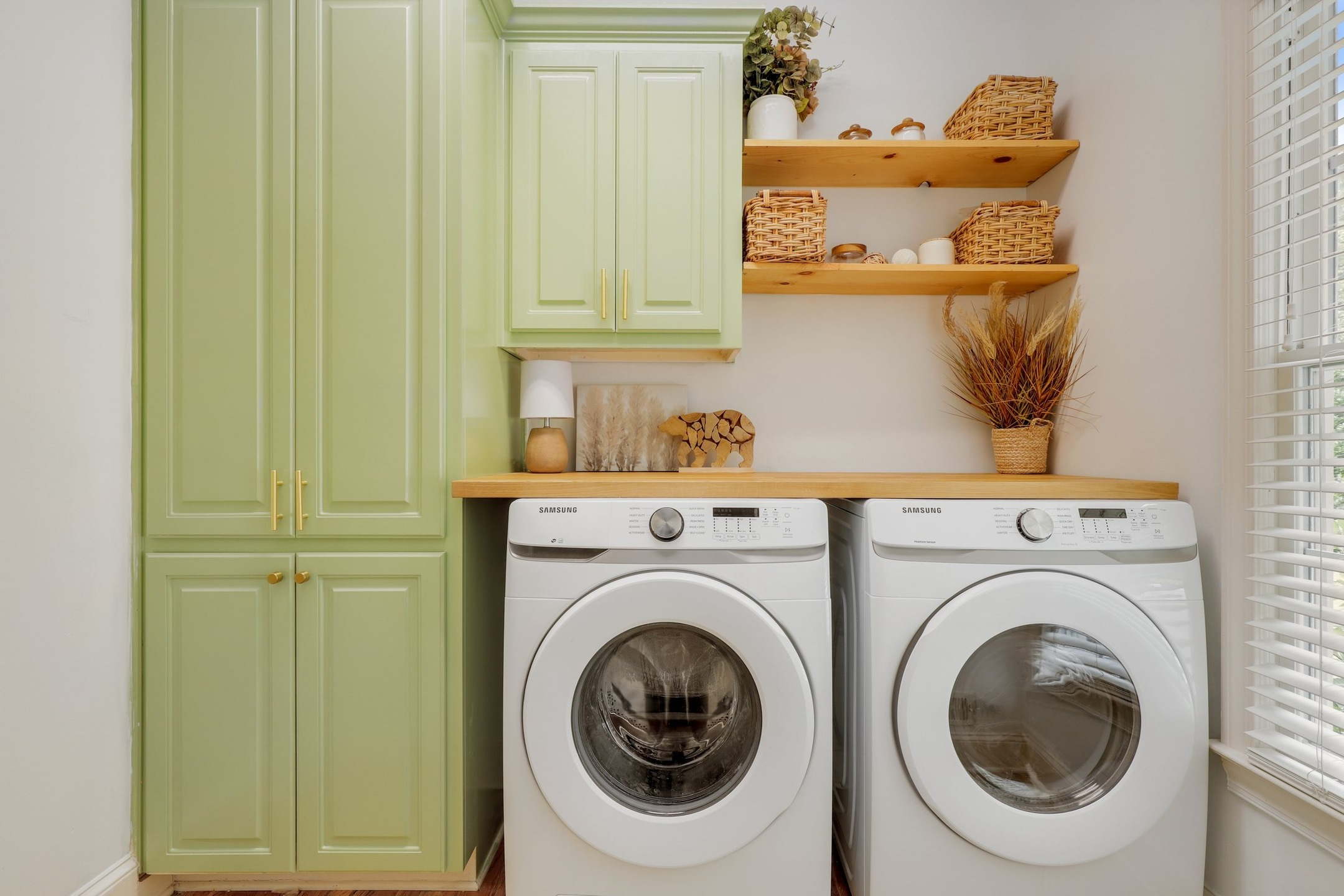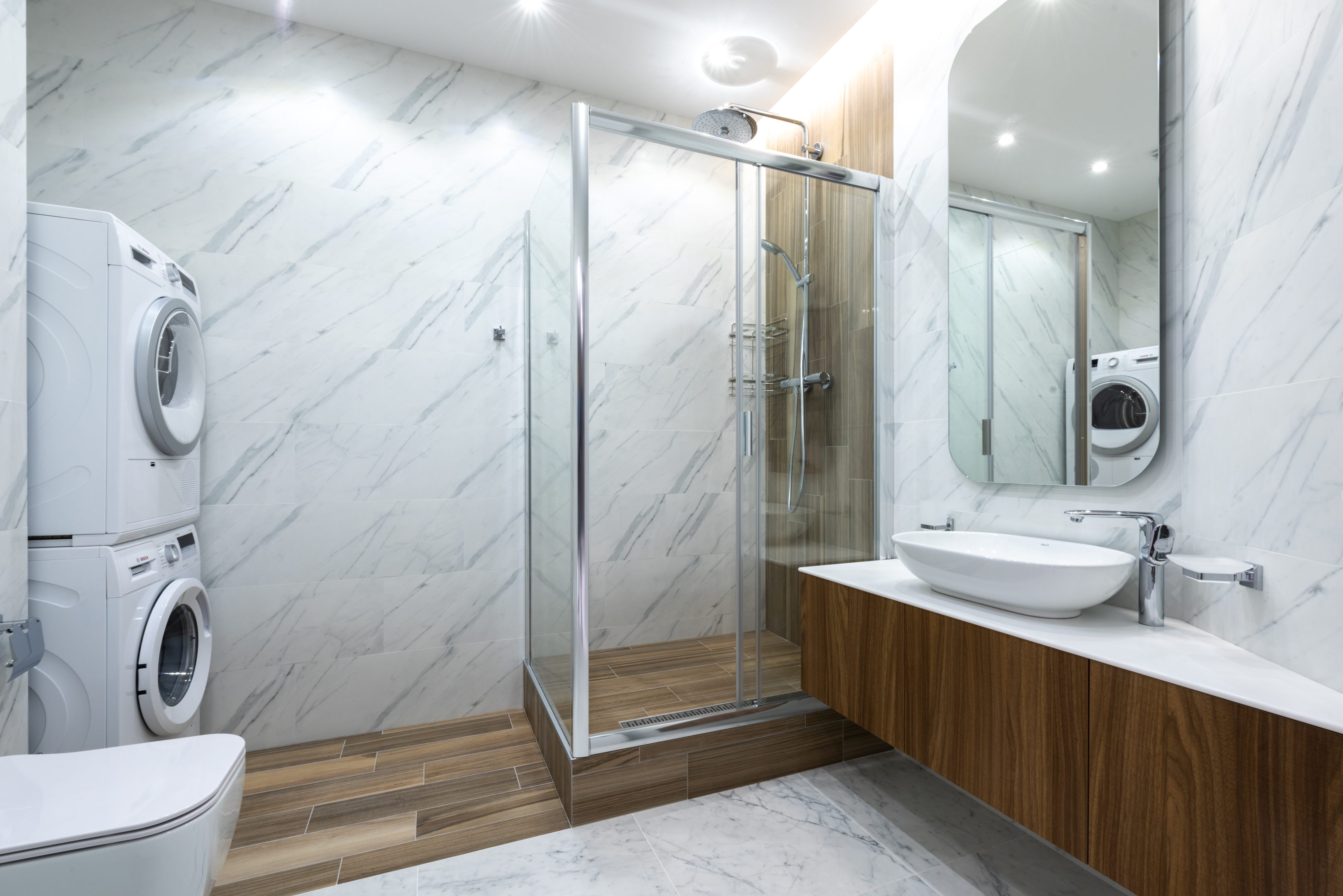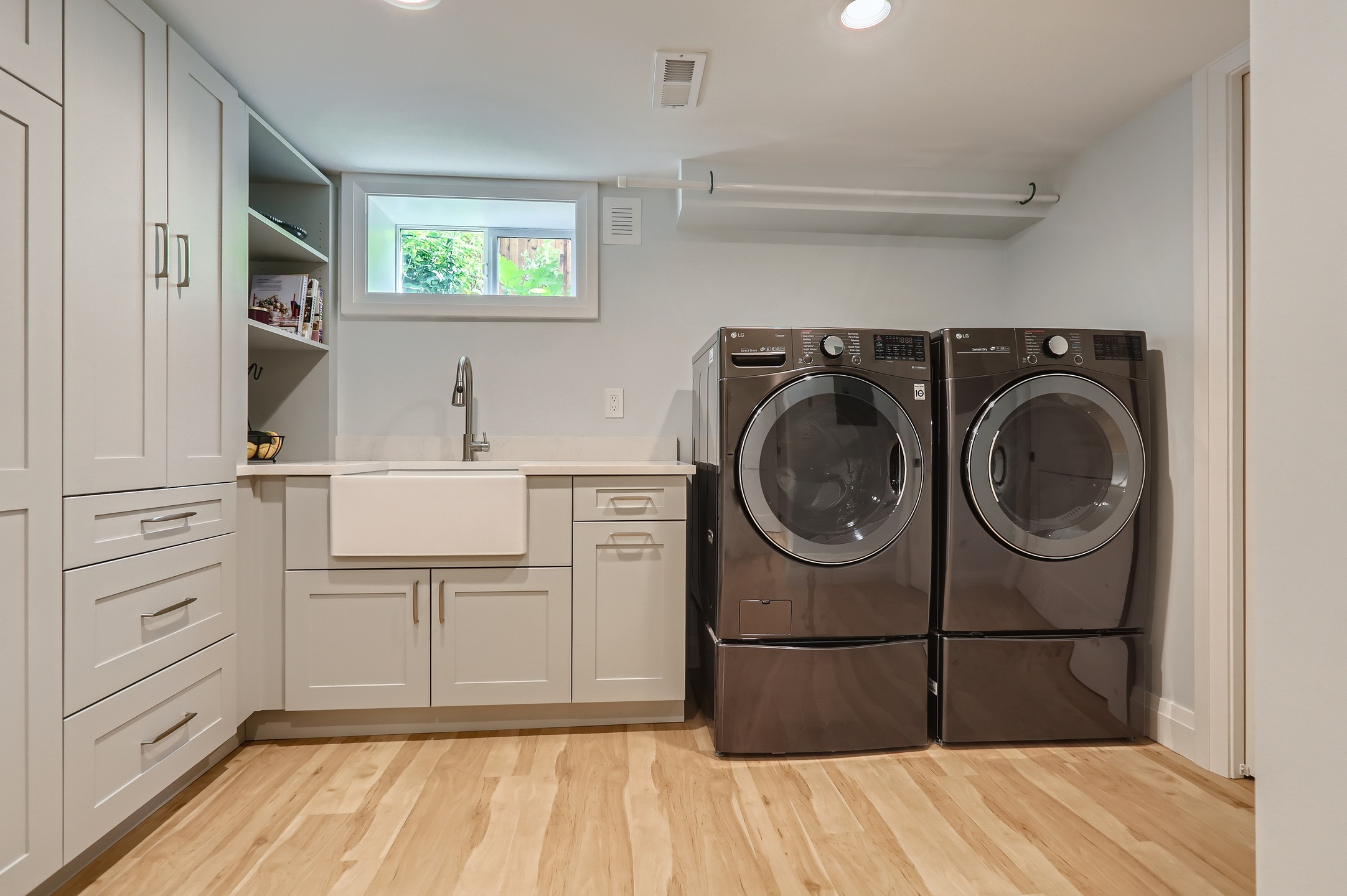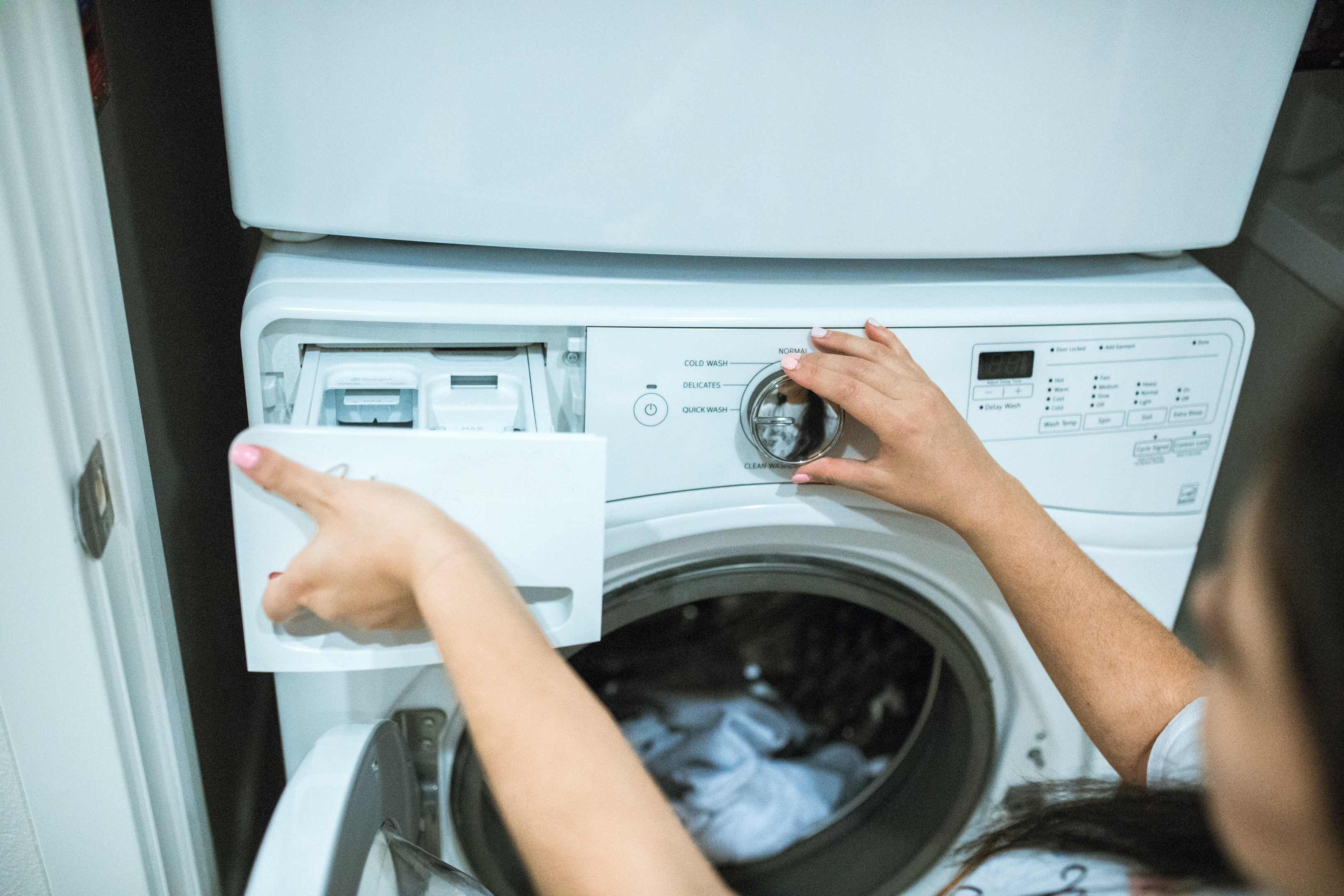While searching for a new rental apartment, you might come across some that seem nearly perfect for you, but there’s just one tiny thing you can’t live without: In-unit laundry. It’s very common when renting in New York, or other major cities, to not have the proper amenities or hookups for a washer and dryer. Still, luck is in your favor because there are alternative solutions out there rather than using a shared laundry room or commute to a local laundry service. Before deciding on the best option for you it’s also important understand the advantages and drawbacks of each choice.

Apartment Washer Options
Whether you’re sending it out or doing it yourself, laundry happens. What isn’t certain is exactly where you’ll do it. Cleaning clothes can become a huge pain for those who don’t have in-unit laundry hookups. When lugging down a full hamper to the laundry room and digging in your pocket for quarters isn’t cutting it, there’s just no other way to spin it, it’s time to look for alternative washer solutions.
Portable washer machine
Portable washing machines are smaller than your standard washing machine, generally ranging between three feet high and two feet wide. Using a portable washer machine is easy because they are fairly light and compact. You shouldn’t have an issue trying to move a portable washer, but it will certainly do the trick when it comes to having an in-unit laundry without washer and dryer hookups.
Pros to portable washer machines
- Compact: Portable washers can come in ultra-compact models for small apartments with minimal storage, ranging from 1.6-2.6 cubic feet. To understand the capacity of a 1.6 cubic foot machine, you could wash two whole outfits, a hoodie, one pair of jeans, and a dress in a single load. This can be a drawback to some, luckily there are more solutions to come.
- Mobility: Portable washers come with add-on features like casters, rollers, and other moving parts to make your washer portable. The best part is, wherever you move, you can easily take your compact washer machine with you. Whether that’s from the kitchen to the bathroom, or from one city to the next, you’ll always have in-unit laundry available.
Cons to Portable washer machines
- Small capacity: While a mini washing machine might be the best solution for you, there can be some drawbacks. You might find yourself doing laundry more often due to the smaller loads. A good strategy is to schedule your loads throughout the week so you don’t have to dedicate an entire day out of your weekend to do laundry.
- Must be hooked up while in use: An outlet and a sink are all you need to get your set-up running. There are a lot of steps, but your basic setup involves attaching a hose to a faucet much like a portable dishwasher. While clean water pumps into the washer, dirty water pumps back out into the sink. You’ll need to disconnect and reconnect the washer after every use.
Combination washer and dryer
If you’re a minimalist, the efficiency of a combination washer and dryer might be right for your apartment. Not to be confused with a washer dryer stack, these machines are all-in-one washer and dryer appliances without the hook-ups. Most washer/dryer combos also have a wash-only and dry-only option. Combo machines come with ventless and vented options as well.
A ventless washer/dryer combo dries your clothes using condensation drying, which involves heating air to dry off wet clothes. Vented combos function like your traditional dryers by wicking water off your clothes through a spinning drum. Also, vented washer/dryer combos can come with a dual ventless feature. All you need in the hook-up process is a standard outlet and faucet.
Pros to combination washer and dryers
- A two-in-one machine: Imagine never having to transfer clothes from one unit to another ever again. In one swoop, washed clothes remain in the machine and seamlessly pass through the drying cycle.
- Environmentally friendly: Although the up-front cost can be quite expensive for a combo machine, you can save money on your water and electric bills in the future. That’s because most washer and dryer combos are considered energy-efficient appliances with ENERGY STAR ratings, using less water than traditional washing machines.
Cons to combination washer and dryers
- Moderate capacity: Similar to all machines other than your traditional washers and dryers, you’ll have to do smaller loads and use less detergent while using a combination machine, even though it’s relatively larger than a portable machine.
- Expensive: Combo machines can range from $1,000-$2,000, similar to starting prices for washer and dryers sold separately. Take into consideration your future plans and desired features from the machine to help budget out the future cost of the amenity.

Apartment dryer options
Drying clothes is an easier solution than washing your clothes since there are fewer hookups to worry about. Here are the two simple solutions for you to consider.
Compact Electric Dryer
Similar to portable washers, compact electric dryers are like mini dryers ranging from 2.6-3.6 cubic feet. The best part about this solution is that the hookup process only involves plugging into an outlet. They’re the best solution for those who have minimal space in their apartment and still need drying options for their clothes and cost less than a combination washer and dryer. Compact electric dryers’ typical starting prices range from $400-$600.
Pros to compact electric dryers
- Compact and portable: For apartment owners looking to maximize their space, these dryers are roughly the size of an average dishwasher, 34 inches high and 24 inches wide, and easy to sit under a countertop. What’s nice is that they also come with portable features such as casters, wheels, and wall-mounts to save valuable space.
- Environmentally friendly: Since compact dryers are smaller than your stationary dryer and are much more efficient, you will save money on electricity. Also, most models of compact electric dryers come with ENERGY STAR certifications.
Cons to compact electric dryers
- Ventilation: Most dryers need to vent out moisture and hot air from the machine.t’s important to locate your dryer near an open window while in use, or, it’s possible for mold to form if there is no airflow in the apartment. Keep in mind that because compact dryers draw less power than conventional dryers, they’ll require two to three times longer drying time.
- Small load capacity: Compact dryers are usually 24 inches deep so expect to use half your typical load compared to a stationary machine’s load. This does make the dryer energy efficient, but if you’re living with roommates or family then this can easily turn a laundry day into a laundry week.
Line drying
Indoor air drying is completely practical and easy for apartment owners to do with a line or a portable drying rack. The best part about this solution is that it’s definitely the simplest and doesn’t need hookups.
Pros to line drying
- Inexpensive and green: Households can save 10-20% on utility bills by hanging clothes to dry rather than using an electric dryer. Not only can it prolong the life of your clothing but also reduce your carbon footprint on the environment.
- No installation required: Avoid the hassle of installing a dryer with any easy set-up air drying solution. A modest amount of clothing spun out by the washer can be strategically placed with a drying rack and can easily dry overnight.
Cons to line drying
- Slow drying time: By going all natural expect your clothes to dry on their time, not yours. You can minimize your drying time by letting them dry near a window where there is some sunlight. Sunlight can not only brighten lights but also be a natural disinfectant.
- Water damage: Over time, wet and dripping water from your clothes can damage wooden and carpeted floors, leading to possible issues with mold. To avoid water damage over time and get back your security deposit, it’s recommended to dry your clothes on a waterproof floor. Areas like the kitchen or bathroom are some of the most common areas to air dry wet clothes.

Picking the right option for you
Many factors should be considered when choosing the right washer and dryer for you. It’s important to think about:
- What features are needed? Most of your non-traditional washer and dryer setups have some savvy features, but it’s essential to look for one that provides the best options you desire, like a child lock feature if you are living with young kids.
- Multiple washes and drying cycles: Many alternative washer and dryers come with a single spin cycle, but others offer several spin cycles that reflect the variety of your clothes and their care options. For example, high heat cycles are perfect for clothes made with cotton and low heat cycles work best for delicates.
- Efficiency: Look for machines that come with a high Combined Energy Factor (CEF) and an Integrated Water Factor (IWF). CEF and IWF are energy performance metrics for ENERGY STAR rated washer and dryers. The scores also reveal to you how much energy is required to power your machine. The higher the score, the more efficient the machine is and can help you reduce energy costs.
- Quiet operations: The majority of today’s newest models are extremely quiet, but it’s best to do your research before buying one.
- How much space is available? Before you go shopping for new appliances, it’s best that you first start by taking precise measurements of the spaces you could install the amenity.
- Do you want a vented or ventless option? As mentioned before, a ventless dryer dries your clothes by heating air to dry off wet clothes while expelling excess water through a drain or tank. Going with a ventless option might be best for new renters or renters with very limited space. On the other hand, a dryer vent works like a traditional dryer, meaning you’ll have to find a way to release hot air without winding up with a humid apartment which could eventually lead to mold in your apartment.

Contract considerations
After your apartment application is approved, carefully check your lease agreement where a washer machine may be addressed. If your agreement doesn’t mention allowing a washer and dryer unit, get in contact with your property manager to see if they have restrictions or if it’d be okay to use alternative washer and dryer solutions.
Doing laundry in your own apartment without having to take a trip to the community laundromat can be a timesaver, especially more convenient in the winter months. Not every apartment comes with the luxury of in-unit laundry. Luckily there are alternative solutions that could work for you.


